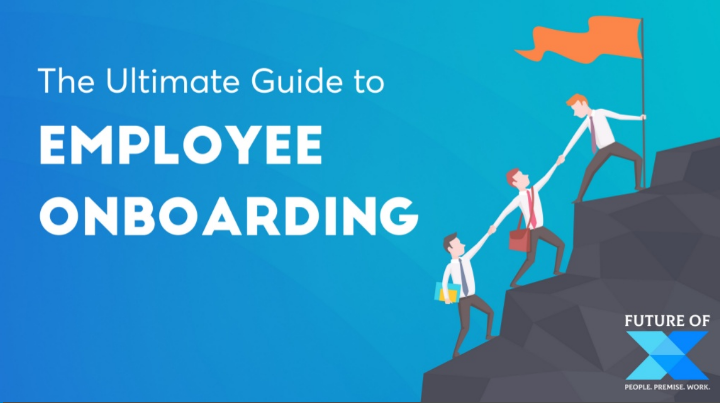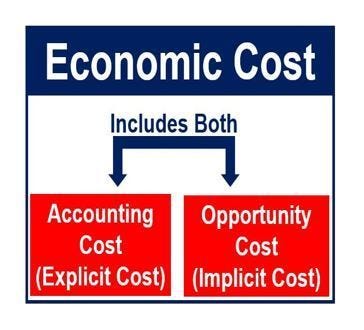The process of On-boarding involves a lot of paperwork and time. Companies tend to forget the costs involved with the entire process. Here is a template to calculate the savings one can make by adopting an Onboarding technology.
Table of Contents
- What is Onboarding?
- Why is Employee Onboarding Process so Important?
- Price Vs Cost
3.1 What is Opportunity Cost? - How much does it really cost to Onboard a new Employee?
4.1 Pre-Boarding Costs
4.2 Onboarding Costs
4.3 First month on the job - Template to calculate your onboarding cost
- Solution
1. What is On-Boarding?
On-Boarding has been defined in “The Ultimate Guide to Employee Onboarding” as :

Onboarding, also known as Organizational Socialization, refers to the mechanism through which new hires acquire the necessary knowledge, skills, and behaviors to become effective organizational members.
Onboarding is the initial process of assimilating new employees into an organization. In addition to equipping new hires with the tools necessary to succeed in their new position, a successful onboarding program provides new hires with the resources to become fully engaged and culturally aware members of a productive workforce.
2. Why is Employee Onboarding Process so Important?
50% of all hourly workers leave new jobs within the first four months
&
50% outside senior hires fail within 18 months citing Poor Onboarding as a reason — SHRM’s onboarding study.
One way companies can improve these statistics is by the use of strategic onboarding techniques that help employees assimilate. While every organization has different onboarding techniques ranging from a formal onboarding process to the sink-or-swim mentality, the important thing to remember is that the faster a new hire feels welcome and prepared for their new job, the faster that employee will be able to contribute to the company’s overall success.

As SHRM points out, employees who are onboard using the sink-or-swim technique often struggle to figure out what is expected and how they can be successful in their new workplace.
Given this is an important aspect of employee retention, incorporating a systematic approach for this is essential. Like every other thing, this also comes with a cost.

People often consider onboarding to be the same as hiring. Because of which, when asked about the costs related to it, they tend to push it as “a Human Resource Manager’s responsibility”. This clearly shows that people are oriented towards considering accounting costs only.
Price is defined as the amount that is paid for a service or a product. At present, the price of anything is based on the accounting cost. Whatever expenses are monetarily visible are considered for deciding the price of anything.
Thus, in order to understand the actual cost associated with On-Boarding, we must understand the difference between accounting cost and economic cost.
3. Price Vs Cost
An economist thinks of cost differently from an accountant, who is concerned with the financial statements.
Accountants tend to take a retrospective look at a firm’s finances as they have to keep track of assets and liabilities and evaluate past performance.
Accounting costs include actual expenses and depreciation expenses for capital equipment, which are determined for tax purposes. These are known as explicit costs.

In general, the explicit costs include the direct costs to the company, such as employee wages, utility bills (water, electricity, etc.), raw material cost, premises cost, transportation, and storage costs. Since these are expenses for which bills or receipts are available, such costs can be objectively verified. In fact, accountants only account for accounting costs in the financial statement of the company. Since these expenses are already incurred, accounting costs are backward-looking.
Economic cost, on the other hand, is concerned with costs that are expected to be in the future, and how the firm would be able to rearrange its resources to lower its costs and improve its profitability.

Economic costs reflect both the implicit and explicit costs of a company that are encountered during the year. They must, thus, be concerned with opportunity costs.
3.1 What is Opportunity Cost?
Opportunity cost is what you have to give up to get something.
Opportunity costs represent the benefits an individual, investor or business misses out on when choosing one alternative over another. While financial reports do not show opportunity cost, business owners can use it to make educated decisions when they have multiple options before them.
The best way to understand this concept is through an example.
Example: The real cost of college
What’s the cost of college? The obvious part of the cost of college is tuition. It’s not room and board because those would be incurred anyway. But the opportunity cost includes the foregone wages from the jobs you could have had if you hadn’t gone to college. This is one of the reasons we go to college when we’re young without any experience in the workplace — our wages are relatively low so the foregone earnings from going to college are lower.

Consider another example, a firm owns a building, and, therefore, pays no rent for office space. Does this mean that the cost of office space is zero for the firm? Though an accountant might treat this cost as zero, an economist would consider the rent that the firm could have earned by leasing the office space to another company.
This foregone rent is an opportunity cost of utilizing the office space and should be included as part of the economic cost of doing business.
Now, we can make an estimate of what exactly is the cost of onboarding a new candidate.
4. How much does it really cost to onboard a new candidate?

Whenever we think about hiring a new employee, we tend to consider the recruitment costs (advertising the position, time spent interviewing and testing and so forth) along with the costs of getting the candidate started (training, orientation, provisioning of materials such as computers and furniture).
However, there’s one area that most organizations fail to fully consider — the cost of onboarding the employee. This includes:
Pre-Boarding Period
- Time spent processing the paperwork
- Material costs
- Shipment costs
- Engagement Cost
On-Boarding Period
- Induction Costs
- Job Role Training Costs
- Storage Costs
First Month on the Job
- Feedback cost
4.1 Pre — Boarding Costs

Onboarding starts even before the new hire’s first day. It starts with physical document collection and certain form filling. Following this, is validation requirements which demand HR executives’ time (Engagement). It is important to keep the candidate engaged to the company, by follow-ups through emails, Whatsapp, etc.
We can observe that ranging from document collection to follow up comes with a cost. Collection of documents, form filling have raw material requirements, which accounts for accounting costs. Pre-Boarding requires the time of HR executives in the process of engagement which accounts for an economical cost.
4.2 Onboarding Costs

On the first day of the newly hired, it is important to have an induction or orientation program for them, so that they understand the company culture, HR policies, etc. This requires a significant amount of HR’s time. Other than this, the documents of the candidate require storage space, which brings in accounting costs.
4.3 First Month on the Job

During the first month on the job, in order to ensure that the new employee is getting adapted to the company well, a certain feedback system is used, in which HR spends some time every week with the new recruit, to understand his/her compatibility to the company.
Now that we know what all should be considered in calculating the cost of onboarding, let’s see how to actually put a dollar value against each item.
5. Template to calculate your Onboarding Cost

Isn’t that shocking?
You spend ~Rs.5600 per new-hire onboarding.
Which means, if you onboard 100 employees a year, you’re spending Rs. 5.6 Lakhs just on on-boarding.
Solution ?
Wouldn’t it be prudent to switch to a paperless onboarding platform that minimizes this onboarding cost drastically but also help you retain your new-hires for a longer period because you would have given them a red-carpet experience?
References:
https://www.icims.com/resources/onboarding-whitepaper/
https://hronboard.me/blog/how-much-does-it-really-cost-to-onboard-a-new-candidate-employee-onboarding/
https://digidesk.co/employee-onboarding-guide.php





5 Comments
Vishnu
4:14 am . July 11, 2019
Why about the paper storage area? It takes a room and multiple cupboards to store the documents and the papers!
PingbackCut down 70% of your Onboarding Cost with Digidesk | Digidesk Blog
PingbackMobile Based Onboarding Solution | Deliver The Best Onboarding Experience to Your New Hires | Digidesk Blog
PingbackHow to Reduce Employee Onboarding Cost in Saudi Arabia | Digidesk Blog
PingbackHow To Reduce Employee Onboarding Cost In Canada | Digidesk Blog